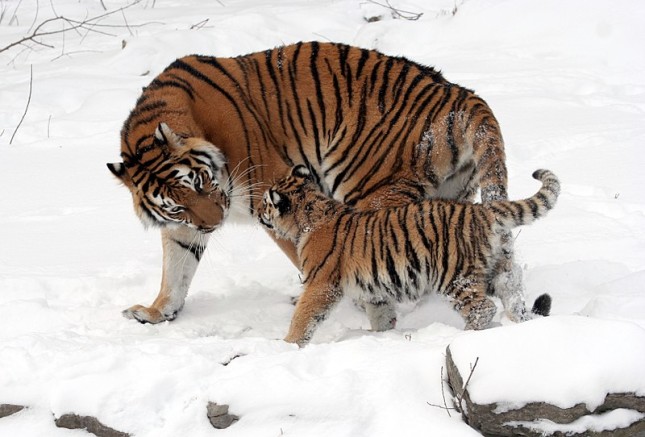-
Sharon Guynup, Mongabay
In Harm’s Way: Our Actions Put People and Wildlife at Risk of Disease
October 29, 2021 By Wilson Center Staff
A gaunt, staggering tigress named Galia alerted researchers in the Russian Far East that something was very wrong. She, and soon other wild Amur tigers (Panthera tigris altaica), wandered through villages and stumbled across roads, dazed, hungry, and boldly unafraid of humans — extremely abnormal behavior for this secretive, wary cat.
When tiger expert Dale Miquelle investigated, he linked these mysterious neurological problems to symptoms of canine distemper, a global and highly contagious virus, that the tigers likely acquired by preying on infected feral dogs or viral hosts: martens or wolves. Galia and others died.
The COVID-19 pandemic has reminded us that many pathogens are zoonotic, jumping from one species to another. Today, global attention focuses on those that originate in wildlife and mutate to infect humans, livestock and our beloved pets. But many pathogens also leap in the other direction, with humans or domestic animals spreading disease to wildlife, says Steve Osofsky, director of the Cornell Wildlife Health Center in Ithaca, New York.
Few people realize that simply bringing humans, cows, pigs, chickens or dogs into — or adjacent to — a wild area can hasten the demise of endangered species. Canine distemper offers just one jarring example: It has substantially increased the odds that the last 500 Amur tigers could disappear forever in the next 50 years.
“There’s a surprisingly simple underlying cause,” Osofsky says: “Our broken relationship with wild nature, often based on a hubris that we are somehow separate from the rest of life on Earth.”
Human activity is rapidly altering nearly every natural system on Earth, so dramatically that it has launched a new geological epoch, the Anthropocene. Many human changes — ranging from rampant deforestation, ranching, farming and global commerce, to international travel, the wildlife trade and climate change — help spread disease.
That’s because these activities bring people, livestock and wildlife into close contact, exposing all to bacteria and viruses for which they lack immunity. In a warming world, mosquitoes, ticks and other parasitic disease carriers are expanding their ranges, bringing deadly and debilitating disease along with them. These changes help new diseases to emerge, disseminate existing diseases to new areas, and escalate outbreaks. In the future, novel diseases could bring other unforeseen consequences, with pandemics impacting entire ecosystems.
See more of Mongabay’s pandemic coverage.
Photo Credit: A female Amur tiger (Panthera tigris altaica) with a cub at Buffalo Zoo, New York, courtesy of Dave Pape via Wikimedia Commons (Public domain).
Sources: Cornell Wildlife Health Center, The Guardian, Integrative Zoology, Lexico, Merck Manual, Mongabay, National Library of Medicine, Proceedings of the National Academy of Sciences of the United States of America
 A Publication of the Stimson Center.
A Publication of the Stimson Center.



